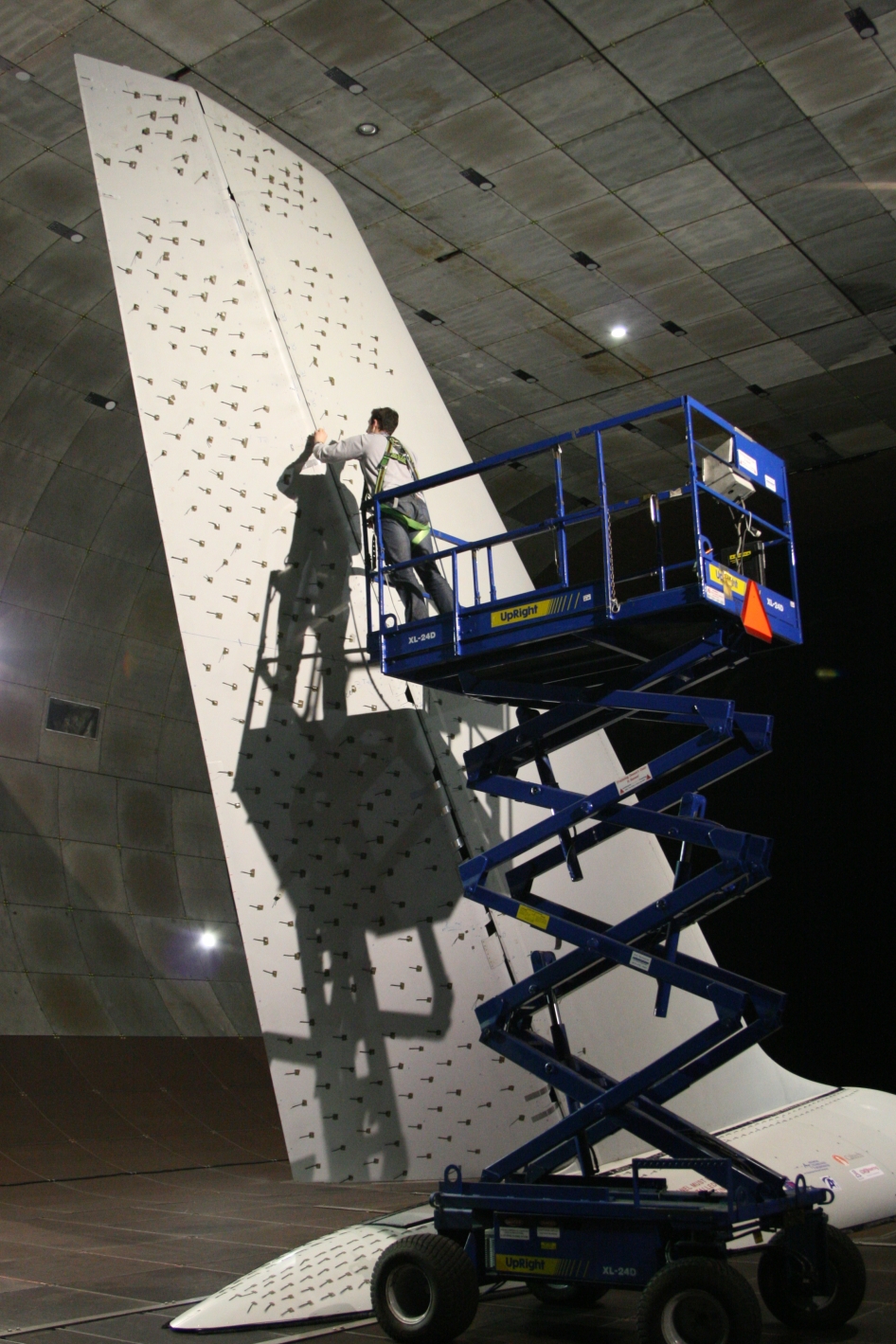Someday the tails on commercial aircraft may not need to be as big as they are today. Their job is primarily to counterbalance aerodynamic forces experienced during takeoffs and landings; once airborne and for the majority of the flight, the tail doesn’t really have a primary function and instead adds drag and impacts fuel use.
NASA and Boeing have teamed up to test a technology called “active flow control” in a wind tunnel at NASA’s Ames Research Center. A full-sized tail from a 757 commercial aircraft was modified and equipped with tiny jets called “sweeping jet actuators” that blow air across the rudder surfaces.
The possible future benefit is that aircraft tails equipped with active flow control systems could be built smaller, reducing not only the overall weight of the aircraft but also reducing drag during the majority of the flight, and therefore dramatically reducing fuel use and emissions.
The active flow control research is a technology goal led by the Environmentally Responsible Aviation project within NASA’s Aeronautics Research Mission Directorate.


































